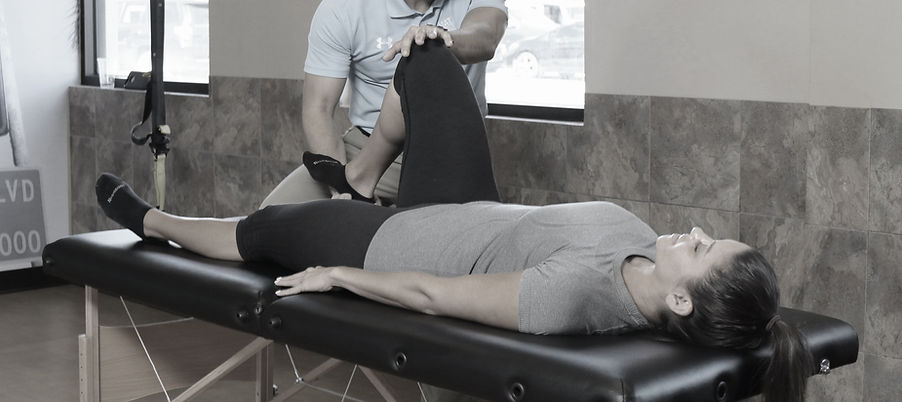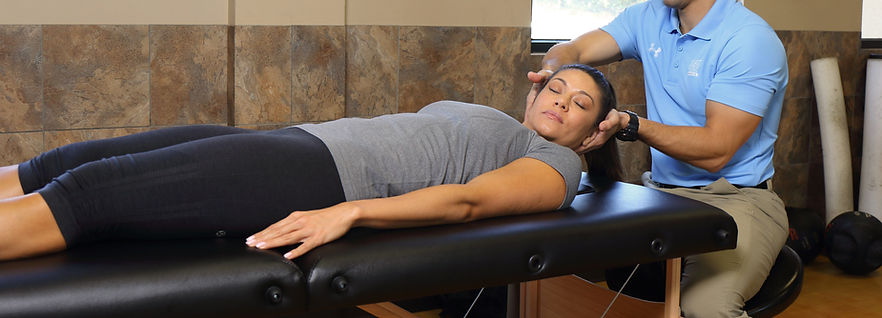
MAT & other Sports Therapies
A Sports Therapy concoction of MAT with Chiropractic
MAT has been a modality of the sports therapy world since the early 1990’s, since then many have been treated by MAT Specialists and had incredible results. It’s not that MAT is utilized for only the Athlete in mind, initially during the infancy of this technique it was used by athletes as a sports therapy to regain muscular function after an injury and also to correct motor recruitment patterns which were resulting in repetitive strain injuries. Since then MAT has been used for people from all walks of life where traditional sports therapies were not improving their symptoms.
How does MAT stack up compared to other mainstream forms of sports therapies? The typical therapies which are used in the Sports Med world vary in approaches. For example Chiropractic has been used as a form of Sports Therapy where they target spinal alignment, the philosophy is that if you can correct spinal symmetry you can alleviate the symptoms of a sports injury and allow it to heal. This is a sound sports therapy theory in regards to structural alignment. However, it is missing in treating the crucial component to spinal position, the muscular component. For example, if a person had been suffering from lower back tightness which was causing muscular pain and began a sports therapy treatment protocol with a Chiropractor, your typical approach would be spinal manipulations from the Chiropractor. If the muscles are incredibly tight the likelihood of this sports therapy treatment lasting long would be low. When someone is suffering from a incorrect spinal position, the question I have in regards to treatment approach is. What was the cause of your spine becoming out of alignment? Usually it is the muscles which cause these asymmetries, unfortunately if these muscles are not corrected any spinal manipulation would be treating a symptom. When Chiropractic is used in conjunction with MAT as a synergistic sports therapy the likelihood of success is much higher because both the symptom and the cause will be treated together and have a much longer lasting effect.



When looking at massage as a sports therapy for example deep tissue massage, MAT has a polar opposite approach to massage therapy. These two sports therapies both directly treat the neuromuscular system however the execution on delivering treatment couldn't be more opposite. For example, deep tissue massage techniques are geared towards directly relaxing tight muscles, while MAT is geared towards increasing activity in inactive muscles which are causing other synergistic muscles to become tight. The majority of sports therapies are geared towards symptom treatment deep tissue being one of them. These therapies use all sorts of techniques and tools which directly affect the tight muscles. They range from massage, dry needling, electrical stimulation etc. The paramount difference in approach with MAT compared to these other forms of sports therapy is that MAT understands that the central nervous system controls all of the muscles precisely to allow controlled human movement. We look at the CNS as an intelligent system of the body which does things purposefully. When the nervous system notices certain muscles damages or inhibited from mechanical stress, trauma or overuse it inhibits these muscles to allow for healing. In the meantime it requires other surrounding muscles to work harder, it usually does this through tightening. Unfortunately, during any period of time while these inhibited muscles are healing the brain is reinforcing compensatory motor patterns through compensation, this can lead to a plastic change in neuromuscular recruitment patterns. Unfortunately when tight muscles are directly treated to relax, this in turn causes an inhibitory response on them. This can lead to further weakness and instability surrounding a joint. With the reversal sports therapy approach MAT takes is that if we can encourage weaker positions to have improved motor functions, thereby activating weak muscles. We can address the root cause of chronic tightness by improving stability. Once the CNS can properly activate these weak muscles it no longer needs the overactive tight muscles to protect and in turn naturally releases the protection all on its own. All this being said, this doesn't mean MAT is superior as a sports therapy, on the contrary there are times where muscles need to be weakened by a manual therapist or by dry needling to prevent these overworking muscles from becoming damaged also. However, usually what happens is that these corrections are short lived as the root cause has still yet to be addressed. When MAT is combined with these other forms of Sports Therapies you now have a powerful tool at fully correcting the most complex of neuromuscular dysfunctions.


